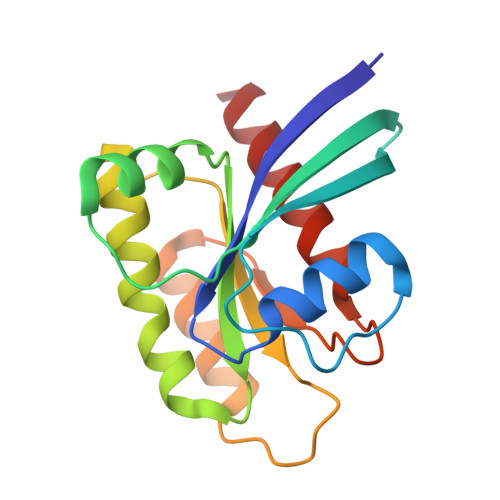The structure of KRAS G12C bound to divarasib highlights features of potent switch-II pocket engagement.
Fernando, M.C., Craven, G.B., Shokat, K.M.(2024) Small GTPases 15: 1-7
- PubMed: 40391409
- DOI: https://doi.org/10.1080/21541248.2025.2505441
- Primary Citation of Related Structures:
9DMM - PubMed Abstract:
KRAS is the most frequently mutated oncogene in human cancer. In multiple types of cancer, a missense mutation at codon 12 substitutes a glycine for a cysteine, causing hyperactivation of the GTPase and enhanced MAPK signalling. Recent drug discovery efforts culminating from work during the past decade have resulted in two FDA-approved inhibitors, sotorasib and adagrasib, which target the KRAS G12C mutant allele. Ongoing medicinal chemistry efforts across academia and industry have continued developing more potent and efficacious KRAS G12C inhibitors. One agent in late-stage clinical trials, divarasib, has demonstrated robust overall response rates, in some cases greater than currently approved agents. Divarasib also exhibits enhanced covalent target engagement in vitro and significant specificity for KRAS G12C , yet the structural details of its binding have not been published. Here we report a high-resolution crystal structure of cysteine-light KRAS-4B G12C in complex with divarasib. Though it binds in the same allosteric pocket as sotorasib and adagrasib, the switch-II loop in each crystal structure takes on a distinct conformation differing as much as 5.6 Å between the Cα atom of residue 65 with sotorasib. Additionally, we highlight structural features of the drug complex that may guide future medicinal chemistry efforts targeting various KRAS alleles.
- Department of Cellular and Molecular Pharmacology and Howard Hughes Medical Institute, University of California, San Francisco, CA, USA.
Organizational Affiliation:



















